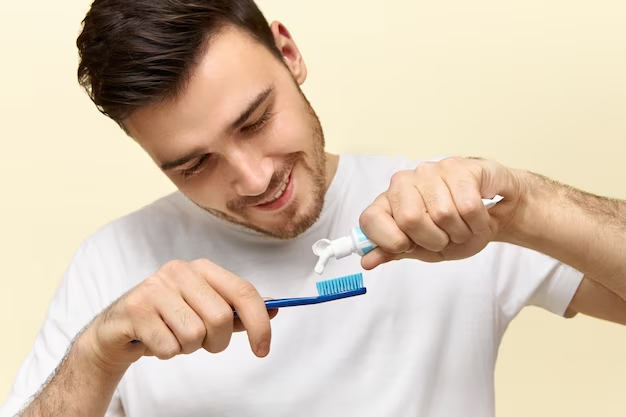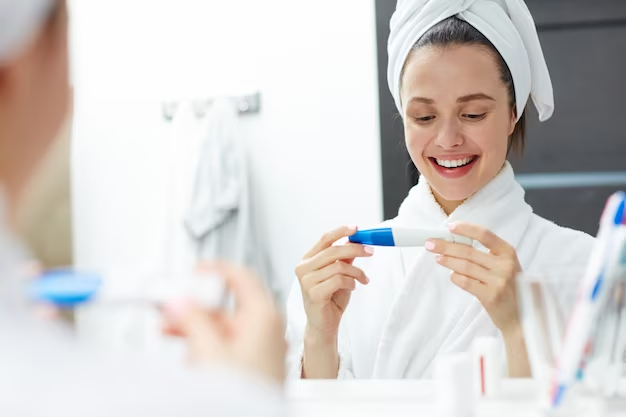Achieving a dazzling white smile is a common goal, and oftentimes, the immediate solution we seek lies within our daily routine—using toothpaste. While the promise of whiter teeth in just one day may seem alluring, it’s crucial to approach such expectations with a blend of optimism and realism. How can I whiten my teeth in one day with toothpaste? Toothpaste geared towards whitening can indeed make a difference in the brightness of your smile, but it’s important to understand the science behind it and set attainable goals. This article will unravel the steps and considerations you need to take into account for boosting the whiteness of your teeth potentially within a day, using toothpaste as your primary tool.
Understanding Tooth Discoloration
Before diving into quick whitening strategies, it’s important to understand what we’re up against. Tooth discoloration can be broadly categorized into two types:
- Extrinsic Stains: These are surface stains on the enamel caused by dietary choices such as coffee, tea, red wine, and tobacco.
- Intrinsic Stains: These stains are deeper and result from medication side effects, trauma, or certain illnesses.
Types of Tooth Stains
Extrinsic stains are the primary target of whitening toothpaste and the kind that can potentially be addressed in a single day. The ingredients in whitening toothpaste are designed to remove surface stains that have not yet set deeply into the enamel.
Causes of Tooth Discoloration
A myriad of factors contribute to discoloration beyond just the food and drink we consume. Age, genetics, oral hygiene, and even environmental factors can impact the color of your teeth. It’s these varying causes that make individual results with whitening toothpaste differ substantially.

Choosing the Right Whitening Toothpaste
Can you get white teeth with just toothpaste? Selecting a whitening toothpaste can be overwhelming with the plethora of options available. Here’s what to keep in mind:
Ingredients to Look For
To see effective results, it’s essential to check for active ingredients that are clinically proven to whiten teeth. These include hydrogen peroxide and carbamide peroxide which act as bleaching agents.
The Role of Abrasives
Many whitening toothpastes utilize mild abrasives which work by scrubbing away surface stains. Commonly used abrasives include calcium carbonate and hydrated silica.
The Importance of ADA Approval
When choosing a product, look for the American Dental Association (ADA) Seal of Approval. This indicates that the toothpaste is both safe and effective for teeth whitening.
Here’s a quick comparative table of common whitening ingredients:
| Whitening Agent | How it Works | ADA Approved? |
|---|---|---|
| Hydrogen Peroxide | Bleaches the tooth to remove deep and surface stains | Yes |
| Carbamide Peroxide | Similarly bleaches the tooth, often found in at-home whitening kits | Yes |
| Charcoal | Absorbs surface stains due to its porous nature | No official stance |
Proper Brushing Techniques for Whiter Teeth
The Right Way to Brush
To maximize your toothpaste’s whitening power, brush gently in a circular motion. This ensures that the bristles work at all angles to remove stains without causing damage to the enamel.
Timing and Frequency
Timing is crucial. Brushing immediately after eating can sometimes harm your enamel due to the acidic environment created by food. Instead, wait at least 30 minutes. Brushing twice a day for two minutes each session is generally recommended for maintaining oral health and aiding in whitening.

Enhancing the Effectiveness of Your Toothpaste
Achieving whiter teeth in a day is not only about the type of toothpaste you use but also about how you complement its efficacy with your lifestyle choices.
Dietary Considerations
What you eat has a significant impact on the color of your teeth. To avoid compromising the whitening process, steer clear of substances known to stain teeth:
- Coffee and tea
- Colored beverages like sodas and red wine
- Acidic foods that weaken enamel, making it more prone to staining
Drinking plenty of water to rinse away substances that can stain, and utilizing straws for beverages, can further enhance the whitening effects of your toothpaste throughout the day.
Home Remedies to Support Whitening
In conjunction with your whitening toothpaste, some natural remedies can further your quest for whiter teeth.
- Oil pulling with coconut oil may remove some surface stains.
- Rubbing a banana peel on your teeth can give a marginal improvement due to its mineral content.
Remember that these methods are supplementary and should not replace your daily brushing routine.
When to Expect Results
While some individuals may notice a change in their teeth’s whiteness within a day of using whitening toothpaste, results can vary. It’s important not to overuse whitening products in hopes of faster results, as this can damage enamel and increase tooth sensitivity.
Safety Tips and Considerations
Understanding the limitations and safety concerns is crucial when chasing that bright smile.
Whitening toothpaste can lead to increased sensitivity for some users. To combat this:
- Look for toothpaste that caters to sensitive teeth.
- Use the whitening product sparingly or alternate with a sensitivity formula.
Recognizing When to See a Professional
If significant or uniform whitening is not achieved, it may be time to seek professional help. Dentists can provide treatments and advice individualized to your oral health needs.

Conclusion
While achieving whiter teeth in a day with toothpaste is possible, it is essential to manage expectations and understand that results can vary. How can I whiten my teeth quickly? Whitening toothpaste can certainly reduce surface stains, but intrinsic stains and long-term discoloration may require more intensive treatments. Always prioritize oral health over aesthetics and never compromise on safe practices for the sake of immediate results.
FAQs
Q: Can whitening toothpaste damage my teeth if used excessively?
A: Yes, overuse of whitening toothpaste can damage tooth enamel and increase sensitivity. It’s important to follow the product instructions and your dentist’s advice.
Q: How can I maintain the whiteness of my teeth after using whitening toothpaste?
A: Maintain oral hygiene with regular brushing and flossing, limit consumption of staining foods and beverages, and consider using a straw for colored drinks.
Q: Are natural remedies for teeth whitening safe?
A: Some natural remedies may be safe but their effectiveness is often minimal. It’s always best to consult with a dentist before trying any home treatments.
Q: How often should I use whitening toothpaste?
A: Most whitening toothpastes are designed for daily use, but you should refer to the product’s guidelines and consult with a dentist for personalized advice.
Q: Is it possible for everyone to get visibly whiter teeth in one day?
A: No, individual results can vary greatly depending on the type of stains, tooth condition, and the whitening method used. Some might see quick results while others may not.
